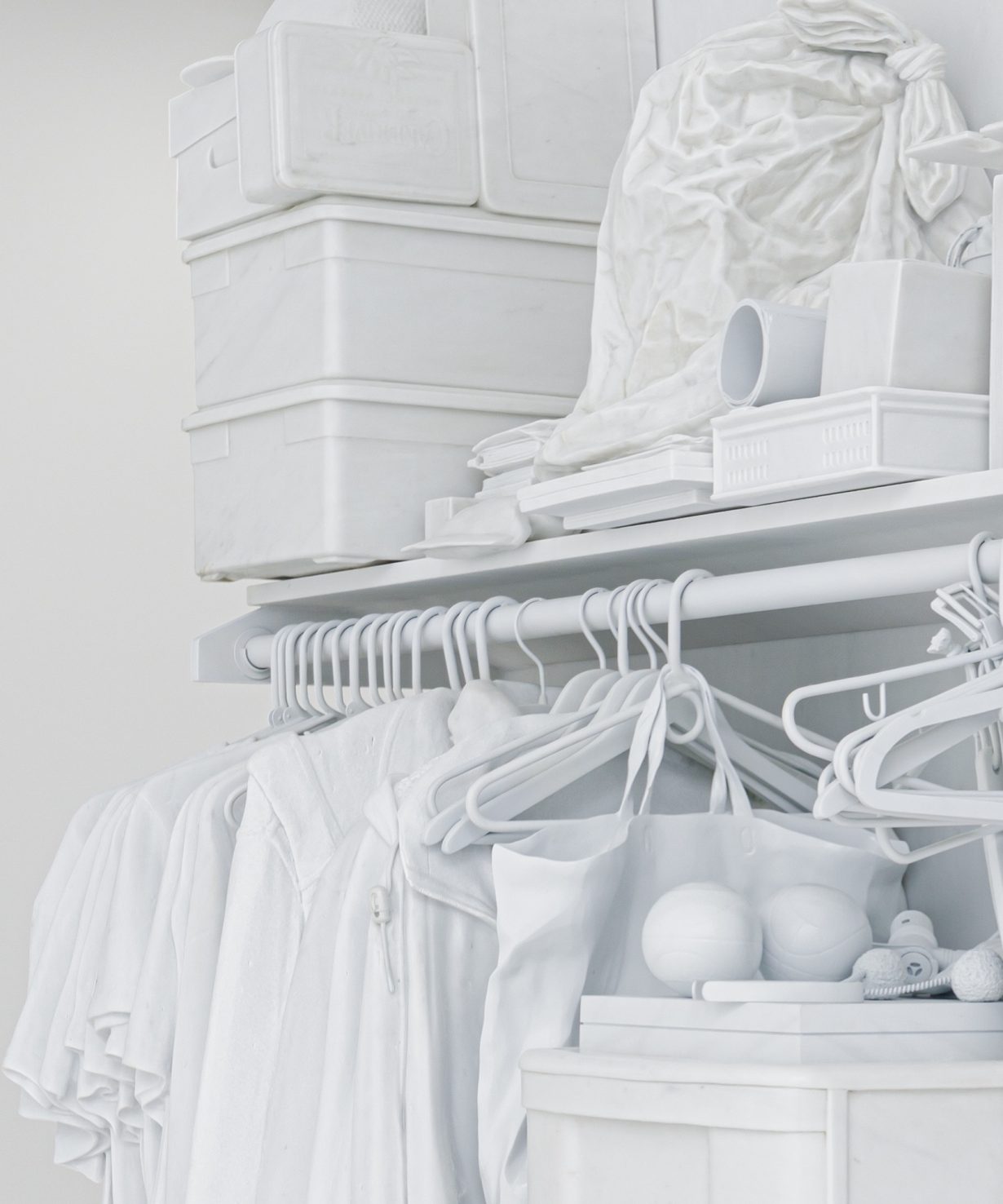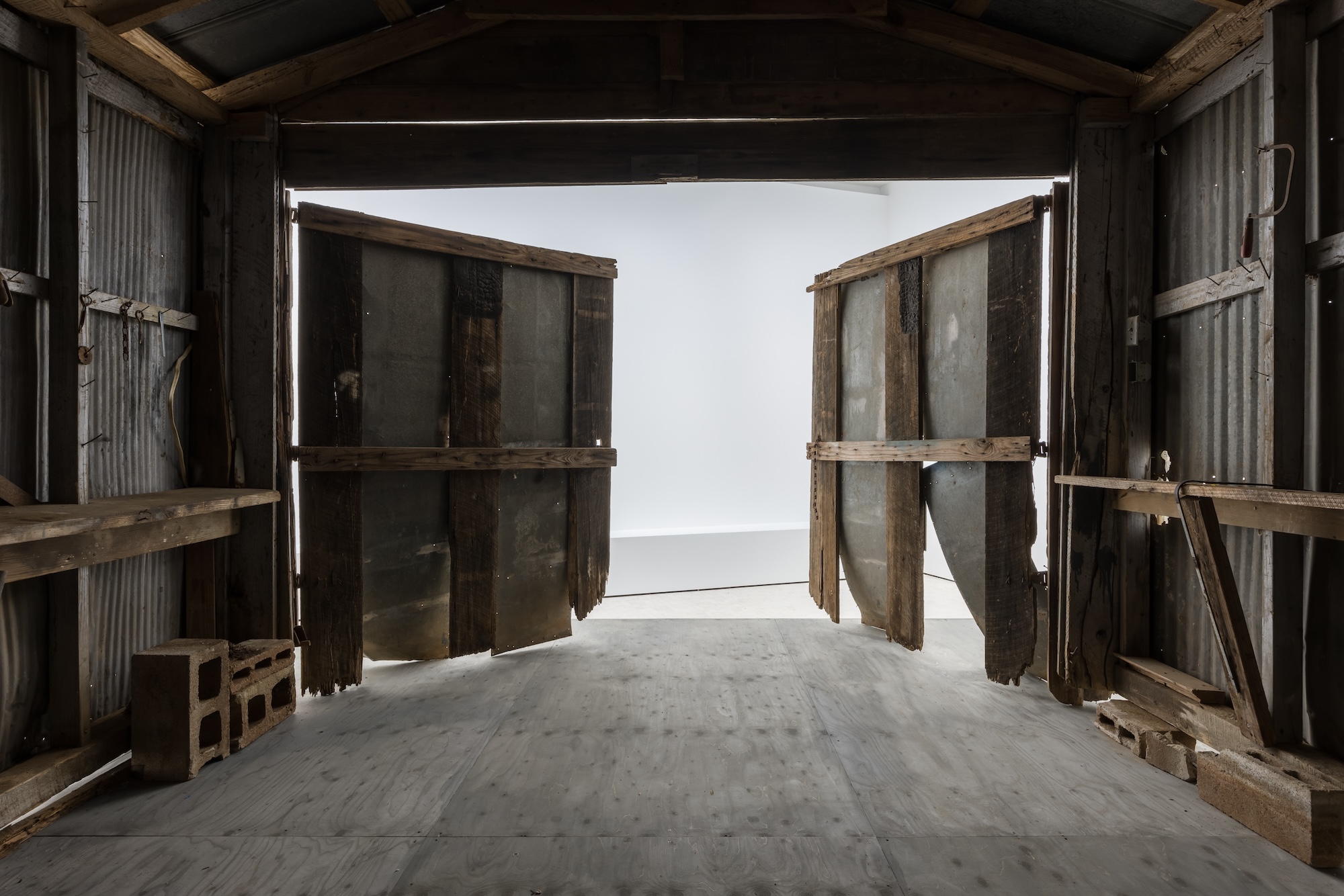The artist’s It only takes a minute at Stephen Friedman Gallery, London is at one creepy and strangely sacral
Two summers ago, Jim Hodges installed his sculpture Craig’s closet (2023) in St. Vincent’s Triangle, a small park in Greenwich Village. There it remained for a year, sharing space with the angular steel canopy of the New York City AIDS Memorial, which honours the more than 100,000 residents of the city who died of the disease. Fashioned from black granite, its finer details picked out in inky bronze, Hodge’s work was based on a 3D scan of the undisturbed contents of a wardrobe belonging to his late partner, the musician Craig Ducote, who died in 2016. The lifesize objects on the sculpture’s a couple of softballs, old notebooks, a walking stick – might have belonged to almost anybody. And yet the way they were arranged – by turns neatly and haphazardly, according to one man’s personal logic – spoke of a specific life, and a specific loss.
For this solo show, Hodges has replicated this mournful, unusually intimate public sculpture in pristine white marble. Standing not in the politically resonant environment of St. Vincent’s Triangle, but in an otherwise empty gallery, Craig’s closet (2024) is a more abstract proposition than its black granite twin. The milky monochrome stone makes the different objects it depicts difficult to tell apart from one another, or even from the walls. Incredibly heavy as it must be, it seems to aspire to total dematerialisation. In the next gallery the audiowork Angel Angel (2025) features a spectral recording of Ducote’s voice, made during what might have been his final months. Listening to him relate how he’s “taken for granted how beautiful life is”, we notice a twinkling, butterfly-shaped kids’ nightlight, sighting wonder (2025), plugged into the gallery wall. We might imagine this kitsch found object providing him with comfort – or maybe guidance – as the dark gathers in, and his soul prepares to break free from its corporeal chrysalis.

Childhood appurtenances also feature in awaiting, (a study of time) (2025), a work in the third gallery consisting of a vitrine containing three stacked clear plastic tubs filled with bags of candy. Has some prepper parent laid these down for Halloween, or a coming apocalypse? Nearby hangs a glazed painting in the gloomy, heavily impastoed manner of Walter Sickert, depicting a Victorian mantelpiece topped with a translucent amber-toned urn, which appears to glow from within. As we draw closer, the picture glass catches our phantom reflections. The work’s title, Medium (2024), gestures towards the thick pigments with which Hodges has conjured his vision, while also summoning thoughts of a living person (the artist?) who speaks with the vanished dead.
The fourth gallery features one final found object, double portrait: father and son (2025) – a huge dilapidated wooden garage, which an accompanying text states was ‘rescued from the Louisiana bayou’. Peering through its slats, we see a single bare bulb illuminate the interior gloom, and are reminded, perhaps, of Marcel Duchamp’s installation Étant donnés (1966). Unlike that work, which invites us to gawk at the prone and faceless form of a naked young woman, there’s little to see here: broken bricks, a child’s rusty BMX, a bladeless hacksaw hanging from a hook. From these few objects, we might infer a history of innocent play, or of devastating trauma. The atmosphere is at once creepy and strangely sacral, and I’m left wondering if I should interpret the titular ‘father and son’ in terms of the Christian godhead. After all, Hodges’s show is much concerned with the possibility of resurrection, and the holiness of ghosts.
It only takes a minute at Stephen Friedman Gallery, London, 24 January – 1 March
From the April 2025 issue of ArtReview – get your copy.
